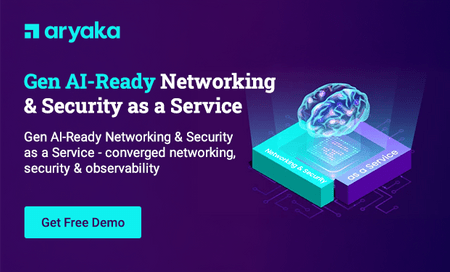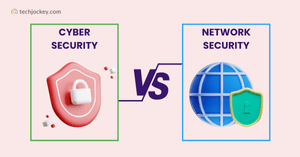Best Network Security Solutions
(Showing 1 - 20 of 47 products)

Checkpoint Quantum Spark
Brand: Check Point Software Technologies
Checkpoint Quantum Spark offers advanced cybersecurity solutions for small and medium-sized businesses by providing robust protection against cyber threats... Read More About Checkpoint Quantum Spark
Price On Request

Cisco Umbrella
Brand: Cisco Systems
Cisco Umbrella is a cloud-based security platform that protects against internet-based threats. It offers a range of security features to help organization... Read More About Cisco Umbrella
Price On Request

Aryaka
Brand: Aryaka
(0 user reviews)
Aryaka provides fast, secure, and reliable global connectivity and security services for enterprises.... Read More About Aryaka
Price On Request

Net Protector Corporate Web Control
Brand: NPAV
Net protector corporate web control allows an organization to allow or block any entertainment website that distracts the employees from doing their work.... Read More About Net Protector Corporate Web Control
₹750 /User/Year

Check Point Sandblast
Brand: Check Point Software Technologies
(0 user reviews)
Checkpoint Sandblast is a cloud environment email protection for Microsoft office 365 which provides the user with varied tools for multiple layer of defen... Read More About Check Point Sandblast
Price On Request

Sophos UTM
Brand: Sophos
(0 user reviews)
Sophos Utm is a Cloud-based Unified Threat Management solution that offers VPN, Firewall, IPS, ATP, web filtering, email and app control modules. The intu... Read More About Sophos UTM
Price On Request

Kitecyber User Shield
Brand: Kitecyber
(0 user reviews)
Kitecyber User Shield protects your identity and internet activity by blocking threats and suspicious behavior right from your device.... Read More About Kitecyber User Shield
Price On Request

zGateway
Brand: Amzetta
(0 user reviews)
zGateway Network Security Software ensures robust protection for your network with advanced threat detection, seamless integration, and enhanced user authe... Read More About zGateway
Price On Request

Accops HySecure
Brand: Accops
(0 user reviews)
Accops HySecure is a secure remote access solution designed to provide businesses with safe and seamless access to their applications, data, and network. E... Read More About Accops HySecure
Price On Request

CDN Pro
Brand: CDNetworks
Be the first to review CDN Pro is an edge cloud platform by CDNetworks that provides secure, accelerated, and programmable content delivery for websites and applications.... Read More About CDN Pro
Price On Request

Cloudtest
Brand: Akamai Technologies
(0 user reviews)
Soasta Cloudtest provides a set of features for business users to increase productivity and perform core functions accurately. Depending on the size and re... Read More About Cloudtest
Price On Request

Checkpoint Infinity Spark
Brand: Check Point Software Technologies
(0 user reviews)
Checkpoint Infinity Spark is a security solution designed for SMBs, offering unified security management, industry-leading threat prevention, Wi-Fi 6, and... Read More About Checkpoint Infinity Spark
Price On Request

Nebtree
Brand: Nebero Systems
Nebtree is an internet management system that allows users to provide reliable, controlled, and stable internet access through efficient user management... Read More About Nebtree
Price On Request

TrackOFF
Brand: TrackOFF
TrackOFF is a privacy protection software designed to stop online tracking. The software safeguards all confidential data of its users from getting expose... Read More About TrackOFF
Price On Request

Nexthink
Brand: NEXTHINK
(0 user reviews)
Nexthink is a cloud-based employee engagement software that works towards consistently enhancing the employee experience. It assists companies in managin... Read More About Nexthink
Price On Request

Radware DefensePro
Brand: Radware
Radware DefensePro is one of the best network security software that meets all the requirements for modern industries. The software offers an impenetrabl... Read More About Radware DefensePro
Price On Request

Smartguard
Brand: XS Infosol Pvt
SmartGuard is an all-in-one security and network management solution designed to protect businesses from cyber threats while streamlining IT operations. It... Read More About Smartguard
Price On Request

Cisco Catalyst SD-WAN
Brand: Cisco Systems
(0 user reviews)
Cisco Catalyst SD-WAN securely connects branches, users, and cloud applications while improving network performance and simplifying centralized management.... Read More About Cisco Catalyst SD-WAN
Price On Request

Radware DefenseFlow
Brand: Radware
SDN-Based DDoS Attack Prevention with Radware’s DefenseFlow-Radware’s DefenseFlow is a networkwide distributed denial-of-service (DDoS) attack preventi... Read More About Radware DefenseFlow
Price On Request
Last Updated on : 15 Dec, 2025
Network Security Solutions Comparison















